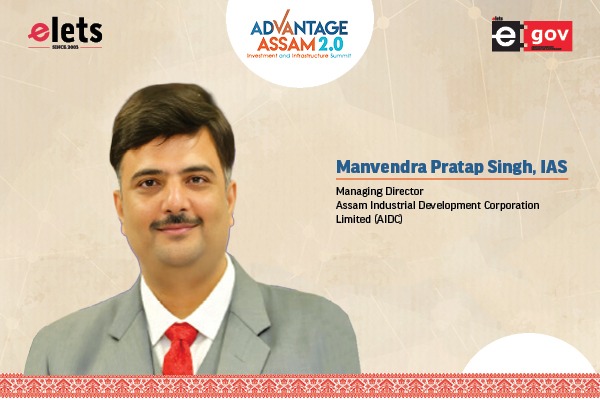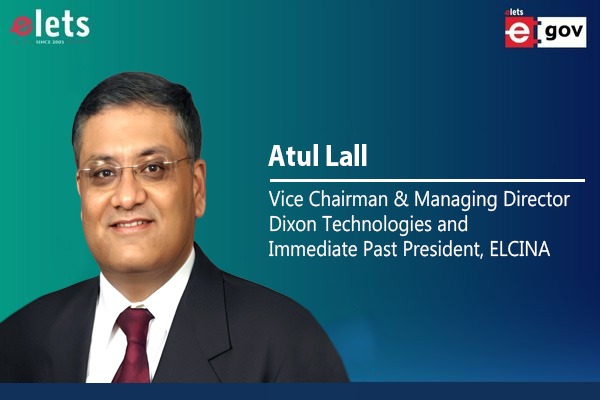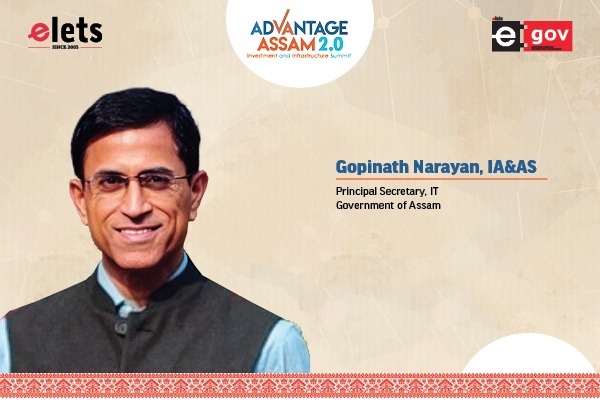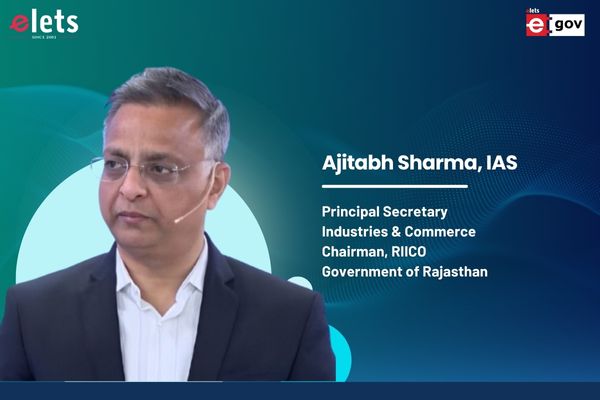 Save departments akin Commercial Tax and Excise, it’s quite rare to notice a theory underlying various e-Governance projects across all the departments
Save departments akin Commercial Tax and Excise, it’s quite rare to notice a theory underlying various e-Governance projects across all the departments

By Pratap Vikram Singh, eGov Bureau

Growing with six percent plus growth rate over the past two decades, Rajasthan has emerged as one of the foremost players in the national economy. Increased industrial growth, agriculture, tourism and young demographics –almost 40 percent of the population- are engines for the high-paced economy. In information technology, the state has emerged as one of the favourite destinations for many domain business houses as is it ranked the eighth biggest IT hub in the country. It is also one of the first few states to have an IT Policy in the year 2000. While making Jaipur as a preferable destination for attracting IT investments, the Vasundhara Raje regime had built the much required ecology for e-Enabling the state. The subsequent, also the present government has remained vigilant, given the regular stock taking of several e-Governance projects done by the current top state leadership.

Rajasthan deserves appreciation for being the first state to have issued an executive order mandating the departments to allocate three percent of the Plan Budget for rolling out critical online government to citizen (G2C) services. It’s also the only state to have mandated the ownership of the common services centre (CSC) [under the National e-Governance Plan (NeGP)] to women.
Besides, it’s a pioneer state to use mobile platform for bringing in transparency and convenience to citizens in service delivery. [Read projects: e-Sanchar, iFACTS]
With the thrust provided by the state top leadership, the revenue earning departments – the commercial tax and excise – started automation in year 2002-03. Today, Department of Excise has become a virtual paper-less office, where more than 80 percent of the work is being done through IT. Commercial Tax department get its 45 percent of the revenue through electronic mode. Department of Mines of Geology, too, is way ahead of its counter parts in other states in leveraging GIS in its business processes.

However, in spite of all forward moves taken by the state authorities on e-Government, the e-Enablement of state as was envisaged by the government in the IT policies of the year 2000 and 2007 is still a distant dream. Save the revenue earning departments-Commerical Tax and Excise- in the state, the re-engineering and automation of business processes and electronic delivery of services are yet to be made a priority in most of the departments.
Use of three percent of plan budget expenditure on providing electronic services was first mentioned in year 2000 policy and was repeated in IT and ITES Policy 2007. However, it was only in the year 2009 when Chief Minister Ashok Gahlot mentioned in his address to the state assembly that all of the departments will be using three percent of their Plan Budget for rolling out online critical G2C services, on the obvious request from the state Department of IT. Following the budget announcement, the state government issued a circular (dated January 18, 2010) mandating the departments to roll out a minimum of two G2C services within a period of six months. Quite expectedly, departments were again indifferent to this ambitious deadline. As of now, the IT dept has appointed consultants for preparing reports for almost eleven departments for rolling online services.
The progress under NeGP is not satisfactory. Though state was able to set up a State Data Centre in December 2010, it has to still cover a long way in projects like State Wide Area Network (SWAN), Common Services Centre (CSC) and mission mode projects including land records, municipalities and road transport.
Infrastructure
The NeGP aims to set up IT infrastructure across the country for providing 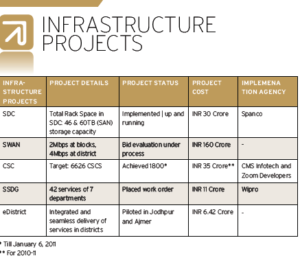 electronic delivery of services at citizen’s doorstep with a strategy of centralised planning and decentralised implementation.
electronic delivery of services at citizen’s doorstep with a strategy of centralised planning and decentralised implementation.
In SWAN project, the authorities are yet to place the work order. The project was approved way back in the year 2006. In fact, Rajasthan was among few states to get approval immediately after NeGP got in existence. The consultant, 3i Infotech, was appointed the same year. Reportedly, prior to the current bidding, there has already been bidding for couple of times, however, the department of IT was unable to finalise the bidder. State Service Delivery Gateway (SSDG) project is being implemented by Wipro Technologies and by uly 2011 it is expected to be operational. However, state has to its credit a successful model running in almost all of its towns, popular as e-Mitra. Launched in the year 2005, more than 600 e-Mitra kiosks are working, presently. In rural areas, under NeGP, around 6626 Common Services Centres are to be set up across the states, out of which 1800 are operational (as of January 06, 2011). CMS Infotech and Zoom Developers are the Service Centre Agency (SCA) working on this project.
Services
Electronic delivery of services is another area where the state has to still work upon. Contrary to a list of promises made in the IT policy documents, online 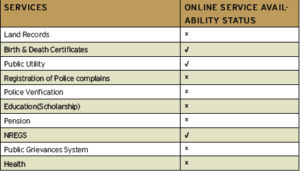 availability of services being one of them, the state is yet to pull its socks. Out of a list of ten critical government to citizen services which includes land records, public grievances and police complain registration, the state has a few, relatively less critical services online.
availability of services being one of them, the state is yet to pull its socks. Out of a list of ten critical government to citizen services which includes land records, public grievances and police complain registration, the state has a few, relatively less critical services online.
At a time when the Government of India is planning to make available every government service online by the year 2014, and when many of the states are drafting legislation to ensure availability of services through internet, the state of Rajasthan is yet to pull its socks and transit to a get-set-go mode on the online services front.
Policies
Rajasthan has state Information Technology Policies with vision as broader as leveraging technology for “integrated participation” in the development process, improvement in the “quality of every aspect of human life”, and emergence of a competitive society and a vibrant economy. Seven years later, state came up with another policy on IT in 2007, which laid out three essential objectives– leveraging ICT for good governance (i), economic development through attracting investments on IT & ITES sector(ii) and nurturing IT skilled human resource and bridging digital divide in the state (iii).
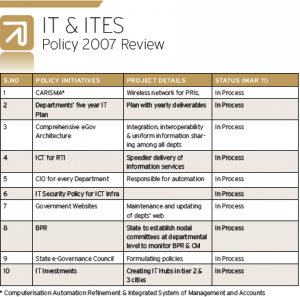 Even a quick glance at these documents clarifies its impeccability in terms of being the blue prints for the state e-Governance roadmap. However, most of the things that were proposed in these documents were not followed by concrete administrative action, cutting across all the departments. As a result, even after 11 years since the first policy was announced, the vision and objectives on e-Governance has mostly remained on papers.
Even a quick glance at these documents clarifies its impeccability in terms of being the blue prints for the state e-Governance roadmap. However, most of the things that were proposed in these documents were not followed by concrete administrative action, cutting across all the departments. As a result, even after 11 years since the first policy was announced, the vision and objectives on e-Governance has mostly remained on papers.
Roadblocks
In almost every government body, a genuine hurdle in planning and executing an e-Government project is the administrative capacity. In response, the state IT dept has underlined this very basic challenge and is in the process of doing mass hiring of IT personnel who will be placed with various departments at the middle management level and below, and also intends to pursue a CIO programme, covering all the departments.
Business continuity is yet another challenge in implementation of projects in government. It is one of the prime reason behind the delay in execution of state specific IT projects and policy initiatives for furthering modernisation and increasing the capacities into the government. Within a span of four years, the Department of Information and Technology and Communication (DOITC) is having its third Secretary in office.
While being the Principal Secretary with Department of IT mid 2007 to early 2009, C K Mathew penned the IT and ITES Policy 2007, which laid out clear roadmap for adoption of e-Government and promotion of state as favorable destination for attracting IT investments. He was succeeded by Tanmay Kumar, who floated the guidelines for use of three percent budgetary allocation for implementing IT projects and rolling out electronically a minimum of two G2C services, across all the departments.
Sanjay Malhotra, an IAS officer of the 1990 cadre is the successor of Kumar and is presently holding the position of Secretary cum Commissioner with Department of IT and Communications. Taking note of the existing dearth in administrative capacity for executing eGovernance projects, Malhotra is working on pumping in fresh blood in to the IT department and provide an army of ICT practitioners to all the state departments. However, whether his association would be for a minimum of three years or as short as of his two predecessors, is a question mark.
Indifference and lack of ownership towards IT automation projects in departments is one big challenge, the Department of IT has been struggling with.
Save departments akin Commercial Tax and Excise wherein clarity exists on use of ICT for maximizing state revenues, it’s quite rare to notice a theory underlying various eGovernment projects across all the departments. Though the terminologies like ‘citizen centric’ governance and ‘transparency’ are quite popular in most of the project documentations, the clarity on its actual significance and the leadership role provided by the departments head, is yet to be seen in most of the offices.
Recommendations
Be it any state, aligning e-Governance roadmap and vision with state’s broader-developmental agenda can go a long way in inculcating skills and buy in for use of ICTs in internal business processes and service delivery. Business Process Reengineering is yet another critical part in any transformational project. State IT and ITES Policy 2007 did mention about undertaking BPR across all the departments and in fact it went to the extent of setting up department specific teams under the leadership of Secretary/ Principal Secretary, which could drive the BPR in the department. Given the fact mere automation of the legacy processes won’t go long way in achieving the organisational goals, BPR must be mandated in almost all of the eGovernment projects.
After having completed the phase of setting up IT infrastructure across the state, the emphasis should be primarily on increasing the number of electronically delivered critical G2C services. The hundreds and hundreds of crores of expenditure on ICT in government would not be worth if the authorities did not succeed in ensuring efficiency, effectiveness and convenience to the citizen in service delivery. An example of prioritising electronic delivery of services can be seen at the Central level as well as in states like Maharashtra where the governments are working on legislative framework for making at least a hundred online services available to citizens and businesses in a time bound manner.
In Rajasthan, the apex level committee through its regular meetings for stock taking of various Central and state IT initiatives has been a driver for furthering the automation and Government 2.0 agenda in the state of Rajasthan. The departments and areas where the progress is below normal, the committee ensures that the required follow up actions are taken there on. However, a full fledged ownership requires a direct push from the CM Office. Projects receiving direct CM intervention have usually done better.
A case in point is the ‘Prashasan Gaon Ke Sang’ programme, where in the state authorities have set up a camp in rural areas to dispose of the citizen’s application for various government to citizen services. In most of the cases, disposal is done either on-spot or in an earliest possible duration. The whole monitoring of this unique programme is done at the CMO. e-Government perhaps demands an equal priority. It is important to notice here that the State e-Governance Council, which is headed by the CM, is yet to convene its first meeting, after years of its inception.
Ray of hope
Moving ahead, a ray of light seems glittering on the other side of the tunnel. Quite recently, Ashok Gahlot in his Budget 2011-12 speech has read out some corrective measures that would be taken to expedite the slow transformation in eGovernment domain. Gahlot assured on the availability of funds for implementing IT projects in the state. He informed that as the follow up to the three percent budgetary allocation for execution of office automation and rolling out online services, `300 crores have been earmarked for the fiscal 2011-12 for all the departments.
To provide the actual benefit of the ICT initiatives, being undertaken in various bodies of government, CM has announced ‘Rajasthan Online Project’, which would prioritise the online operations and service delivery for better government and citizen interface. Moreover, to bring in the much talked about ‘transparency’ into the government, including the tendering (tenders above`50 Lakh) and procurement process, he also proposed to have ‘Rajasthan Transparency Act’ – which would provide for phase wise execution of eProcurement across departments.
In sum, the fact that chief political and administrative executives are quite positive about using e-Government for enabling good governance in state can’t be negated. This is the time when state departments can use the current ecology in their favour, for enhancing the state citizen interface with help of technology, and resources at their disposal. Businesses have already found IT an inalienable part of their work processes and roadmap to success. The sooner the government moves towards modernising and transforming its processes and service delivery mechanism, the better would be the state citizen relationship, and so would be political, social and economic stability. It is high time that the political and administrative leaders join hands together to realise a true electronic government and governance in Rajasthan in a time bound fashion.
Be a part of Elets Collaborative Initiatives. Join Us for Upcoming Events and explore business opportunities. Like us on Facebook , connect with us on LinkedIn and follow us on Twitter, Instagram.
"Exciting news! Elets technomedia is now on WhatsApp Channels Subscribe today by clicking the link and stay updated with the latest insights!" Click here!




